

Richard Avedon’s Fashion Revolution. Richard Avedon Biography. “All photographs are accurate.
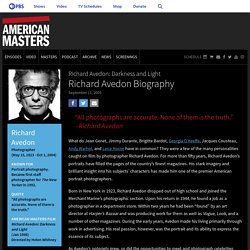
None of them is the truth.” –Richard Avedon What do Jean Genet, Jimmy Durante, Brigitte Bardot, Georgia O’Keeffe, Jacques Cousteau, Andy Warhol, and Lena Horne have in common? They were a few of the many personalities caught on film by photographer Richard Avedon. Harper's BAZAAR Photographs From 1950s - Richard Avedon Photographs From the 1950s. By the early 1950s, Harper’s Bazaar was well into what Christian Dior would refer to as “the golden age” of fashion.
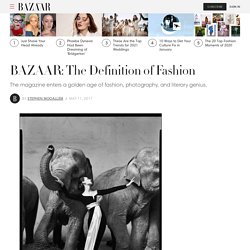
It was an era that Dior himself helped jolt into being with the unveiling, in February 1947, of his “New Look.” “Swirling skirts. Pleats and pleats. Dior makes a skirt 45 yards wide,” Bazaar raved in the October 1947 issue, marveling at Dior’s quasi- libertine use of material, coming as it did on the heels of wartime fabric rationing. It was a boon for couture, as Paris reclaimed its place as the seat of high fashion; the houses of Balenciaga, Balmain, and Fath were all flourishing. Avedon exhibit at Tucson's Center for Creative Photography puts relationships into focus. Senf curated the center’s exhibition “Richard Avedon: Relationships,” which opens Saturday, Dec. 15.
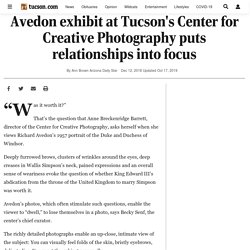
The exhibit presents 80 Avedon images from the center’s holdings, including large-scale prints, and explores Avedon’s approach to photographing people. It is an amazing, world-class exhibition, says Breckenridge Barrett. Avedon originally worked with former center director James Enyeart to place more than 400 significant photographs at the center from 1989 through 2004. Complemented by select purchases, the collection now has 456 works that span Avedon’s career chronologically and by subject. The center also houses archival materials, such as correspondence, contact sheets, engraver’s prints and a Louis Vuitton case adapted for carrying camera equipment. Richard Avedon.
Throughout his 60-year career, the photographer Richard Avedon created only a handful of portfolios which he presented as complete bodies of work meant to be displayed as one group of photographs.
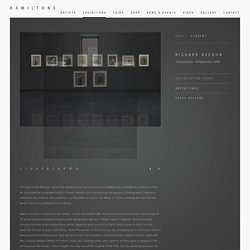
Hamiltons exhibited two of these rare portfolios, La Passante du Siècle and Made in France, marking the first time the former had been exhibited in its entirety. Made in France is a portfolio by chance. It was assembled after Avedon’s re-discovery of an intact group of 27 of his original engraver prints from the glory years that were 1950s Harper’s Bazaar. During this time Avedon became an ascendant force at the magazine and travelled to Paris twice a year to report on the post-war French couture collections. Avedon Fashion 1944–2000. Richard Avedon (1923-2004) revolutionized fashion photography starting in the post-World War II era and redefined the role of the fashion photographer.
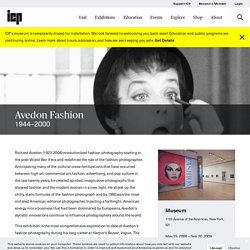
Anticipating many of the cultural cross-fertilizations that have occurred between high art, commercial art, fashion, advertising, and pop culture in the last twenty years, he created spirited, imaginative photographs that showed fashion and the modern woman in a new light. He shook up the chilly, static formulas of the fashion photograph and by 1950 was the most imitated American editorial photographer. Injecting a forthright, American energy into a business that had been dominated by Europeans, Avedon's stylistic innovations continue to influence photographers around the world. Richard Avedon. He is one of the few to bridge the oft-separated gap as both a fashion and fine art photographer, blurring the lines between the two practices.
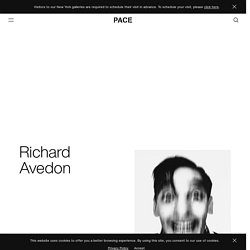
Avedon’s joined the Young Men’s Hebrew Association (YMHA) camera club when he was twelve years old, display an early interest in photography. History — The Richard Avedon Foundation. Richard Avedon (1923–2004) was born and lived in New York City.
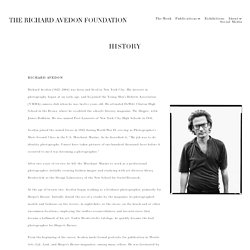
His interest in photography began at an early age, and he joined the Young Men’s Hebrew Association (YMHA) camera club when he was twelve years old. He attended DeWitt Clinton High School in the Bronx, where he co-edited the school’s literary magazine, The Magpie, with James Baldwin. He was named Poet Laureate of New York City High Schools in 1941. Avedon joined the armed forces in 1942 during World War II, serving as Photographer’s Mate Second Class in the U.S.
Merchant Marine. After two years of service, he left the Merchant Marine to work as a professional photographer, initially creating fashion images and studying with art director Alexey Brodovitch at the Design Laboratory of the New School for Social Research. The Work — The Richard Avedon Foundation.